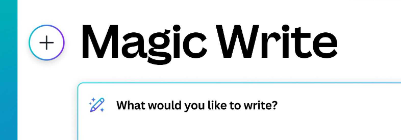 Getty Images
Getty ImagesThose who usually opt for small-ticket loans of below Rs 1 lakh, may face more scrutiny while getting a loan from a bank or NBFC.
ET Year-end Special Reads
Adhil Shetty of Bankbazaar.com says, "Earlier, for every Rs 100 in personal loan receivables, the risk-weighted assets would be 100% of Rs 100 — which is equal to Rs 100. Due to the new rule, the risk-weighted assets are 125% of Rs 100 — that is Rs 125. Assuming a 9% capital adequacy ratio (CAR), banks now needs to set aside 9% of Rs 125, which comes to Rs 11.25 — compared with Rs 9 at 9% of Rs 100 earlier. Therefore, the increase in capital requirement is Rs 11.25 - Rs 9 = Rs 2.25 for every Rs 100 in personal loan receivables, or 20%."
Further, credit card receivables of scheduled commercial banks, which used to attract a risk weight of 125%, have been hiked to 150% while NBFCs' risk weights have been raised by 25% to 125%.
What is a risk-weighted asset and how is it going to impact your personal loan?
A common term in the banking industry, a risk-weighted asset refers to the measure to assess the risk associated with assets, including loans. It helps lenders determine the minimum amount of capital that a financial institution needs to hold to cover its credit risk. "A higher risk weight implies a higher capital requirement for a given exposure, potentially leading to a lower capital adequacy ratio (CAR). This could force the institution to raise additional capital to meet regulatory requirements," says ICICI Direct.Let us understand its implication. To lend more, the lender will need to go to the market to raise more funds. As all lenders face the same situation, there will be a rise in demand for fresh funds. This will raise the cost of funds. To offset this cost, lenders will receive funds at higher cost they will also lend at higher rates.
The RBI's decision to increase risk-weighted assets will also impact the common equity tier-I (CET-1) of banks. The Common Equity Tier-I or CET-1 is the measurement of a bank's core equity capital compared with its total risk-weighted assets. It denotes the financial strength of the bank.
"As the RBI has increased the risk weights, it is the Common Equity Tier-I (CET-1) that gets impacted. As per our calculations, banks will take a hit of 50-60 basis points (bps) on their CET-1," says ICICI Direct.
RBI increases risk-weighted assets for unsecured personal loans: How it impacts banks

Source: ICICI Direct, as on December 8, 2023
Mohit Mittal, Director of Investment Research at Acuity Knowledge Partners, says the impact on banks could be moderate as they already have well-diversified portfolios and higher capital adequacy ratios. “While well-capitalised banks could potentially absorb the impact, others are likely to pass on the cost to borrowers."
"Numerous brokerage houses and rating agencies estimate a negative impact of the increase in risk weights on the equity tier-1 ratio at the sector level in the range of 40-70 bps. Given the comfortable capital levels of the banking sector, with many banks’ tier-1 ratios currently at historical highs, interest rate hikes for unsecured retail loans could be smaller and gradual," he adds.
Bigger trouble for NBFCs
This move could spell bigger trouble for NBFCs and the growth momentum, say most analysts. NBFCs usually borrow money from banks and lend it to consumers. "The impact on NBFCs is anticipated to unfold in two ways: One, banks will adjust loan pricing to NBFCs to counteract the increased capital buffer requirement, potentially resulting in a moderation of bank lending to NBFCs, especially those not covered by priority sector lending (PSL) guidelines;. Two, as the RBI has raised the risk weights on regulated entities’ (banks and NBFCs) unsecured personal loan exposure by 25%, affecting the capital buffers of NBFCs, there may be a slowdown in lending in the near term," says Sanjay Agarwal, Senior Director, CareEdge Ratings. Banks and NBFCs with higher exposure to unsecured loans could impose stricter underwriting standards, making access to personal loans difficult and a time-consuming process, says Mittal.
Will interest rates of personal loans go up in 2024? How much interest rate hike can you expect?
"The increase in risk weightage typically makes small-ticket personal loans, particularly those offered by NBFCs, more expensive for lenders. This could lead to higher interest rates or tighter eligibility criteria for borrowers,” says Raoul Kapoor, Co-CEO, of Andromeda Sales and Distribution Pvt Ltd. This move will not affect home, auto loans or education loans. The increase in the risk weights affects the personal loan segment in general, the impact on the small ticket segment shall be more pronounced, says A.M. Karthik, Senior Vice President & Co-Group Head, Financial Sector Ratings, ICRA, Ltd. The rate hike is likely to be quicker and visible in smaller ticket-size loans of less than Rs 50,000, says Mittal.
Will the interest rate of personal loans go up soon? Karthik says: "Interest rates in the personal loan segment range from 12-13% to as high as 30-35%. Competitive pressures at the lower end of the band would be elevated considering the prime nature of the borrowers. However, the higher cost of capital, by way of risk-weight increase for both NBFCs and banks, and, an increase in the deposit rates of banks, and correspondingly the borrowing cost of NBFCs, will push up the rates in this segment.
How much will interest rates will go up for personal loans? Agarwal estimates an increase of 0.20% to 1.5% depending on components of the loan (size, riskiness of the borrower, tenure, etc) and the lender (incremental capital charge, cost of funding).
Karthik expects the rates to go up by about 20-40 bps at the lower end of the current interest rate band. The jump can be more at the higher end, he adds.
Quick loans will not be quicker anymore
Getting a loan will also become difficult. "The increased risk weights on unsecured loans might make lenders more cautious, potentially leading to stricter eligibility criteria and a more rigorous assessment process for loan approvals," says Kapoor.Those who usually opt for small-ticket loans of below Rs 1 lakh , may face more scrutiny from lenders. "Customers with a higher risk profile may face delays in obtaining unsecured loans or end up paying a higher interest rate. We see greater scrutiny in loans with ticket sizes of above Rs 50,000 (12% of the banking systems retail portfolio)," says Mittal.
Banks could also try to marginally downsize their exposure to the small- ticket loans largely driven by their tie-ups with fintechs.
“It's not like loans will be impossible to get, but there might be more scrutiny on the borrower's creditworthiness,” says Kunal Varma, CEO at Freo. “If you have been attentive with your repayments, kept your credit behaviour disciplined, and maintained a solid credit score, you can manage to get a good deal." But , it would be an issue for those who have lower credit scores and bad credit history. Loan interest rate and accessibility will set to get difficult for them.
"In a nutshell, the RBI’s risk weight hike is set to put a damper on the unsecured personal loan market in India. Brace for higher interest rates and potentially stricter lending criteria," says Pramod Kathuria, Founder and CEO of Easiloan.
(Catch all the Personal Finance News, Breaking News, Budget 2024 Events and Latest News Updates on The Economic Times.)
Subscribe to The Economic Times Prime and read the ET ePaper online.
Read More News on
(Catch all the Personal Finance News, Breaking News, Budget 2024 Events and Latest News Updates on The Economic Times.)
Subscribe to The Economic Times Prime and read the ET ePaper online.





































 Get Unlimited Access to The Economic Times
Get Unlimited Access to The Economic Times
